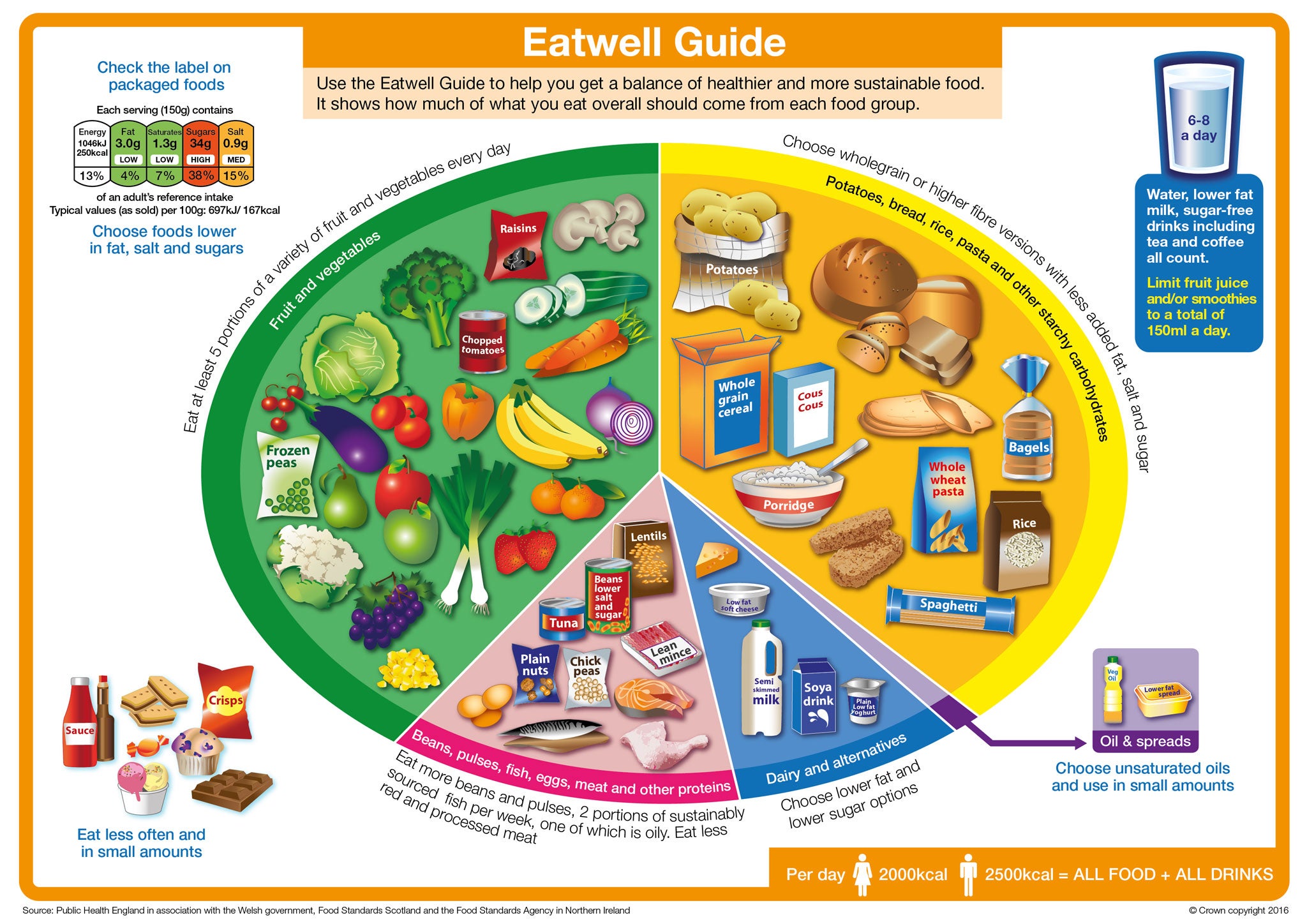Healthy eating graphic from Public Health England was developed with members of food and drinks industry
The image for the Eatwell Guide was decided upon by a reference group made up of almost 50% industry members

Your support helps us to tell the story
From reproductive rights to climate change to Big Tech, The Independent is on the ground when the story is developing. Whether it's investigating the financials of Elon Musk's pro-Trump PAC or producing our latest documentary, 'The A Word', which shines a light on the American women fighting for reproductive rights, we know how important it is to parse out the facts from the messaging.
At such a critical moment in US history, we need reporters on the ground. Your donation allows us to keep sending journalists to speak to both sides of the story.
The Independent is trusted by Americans across the entire political spectrum. And unlike many other quality news outlets, we choose not to lock Americans out of our reporting and analysis with paywalls. We believe quality journalism should be available to everyone, paid for by those who can afford it.
Your support makes all the difference.A healthy eating graphic from Public Health England (PHE) was developed with members of the food and drinks industry, documents show.
The image for the Eatwell Guide, which was unveiled in March, was decided upon by a reference group made up of almost 50% industry members.
These included the British Retail Consortium, the Food and Drink Federation, and the Institute of Grocery Distribution, whose members include Tesco, Sainsbury's, Asda and Waitrose, as well as major food producers and brands.
The group also included representatives from the Association of Convenience Stores and the Agriculture and Horticulture Development Board (AHDB), which is funded by farmers and growers and supports the meat, dairy and potato industry.
Other members of the review group included health bodies such as Association for Nutrition and the British Nutrition Foundation.
Criticism of PHE's links with industry have been made in a new report from the National Obesity Forum and the Public Health Collaboration.
It is not the first time PHE's association with industry has come under scrutiny.
Last year, experts in the British Medical Journal (BMJ) and The Lancet criticised the evidence used by PHE in its report on e-cigarettes.
Researchers questioned the robustness of the data and pointed to links between some experts, the tobacco industry and firms that manufacture e-cigarettes.
An editorial in The Lancet medical journal attacked the "extraordinarily flimsy foundation" on which PHE based its major conclusion.
And in the BMJ, two further researchers said PHE's claims that "the current best estimate is that e-cigarettes are around 95% less harmful than smoking" came from a single meeting of 12 people, some of whom had links to industry.
The external reference group for the Eatwell Guide met several times between 2014 and 2015.

Their terms of reference included revising the segment sizes for the Eatwell Plate, reviewing the visuals and "approaches for reflecting messages on foods that should be consumed in limited amounts", the documents, seen by the Press Association following enquiries to PHE, show.
The eventual guide put high-fat and high-sugar foods outside the healthy eating "wheel", with a warning to "eat less often and in small amounts".
The dairy section was cut to almost half its previous size and replaced with pictures of several lower fat options.
The beans, pulses, fish, meat and eggs section remained the same size but advised people to "eat less red and processed meat".
The guide also told consumers to eat "at least" five portions of fruit and veg per day, while the section for potatoes, bread, rice, pasta and other starchy carbohydrates was beefed up to give a slightly bigger role for these foods.
A new oils and spreads section also urged people to "choose unsaturated oils and use in small amounts", while people were also told to drink water, lower-fat milk or sugar-free drinks.
Dr Alison Tedstone, chief nutritionist at PHE, said decisions on the graphic were made separately to the nutritional recommendations underpinning them.
She said: "Our independent experts review all the available evidence - often hundreds of scientific papers - run full-scale consultations and go to great lengths to ensure no bias when developing our scientific advice on nutrition.
"These recommendations are completely separate to the Eatwell model, which is a visual way of presenting the information.
"The refresh of the Eatwell model was conducted openly using robust scientific approaches. Advice was generated from an external reference group engaging interested stakeholders; including health, voluntary and industry representatives to ensure a wide range of views were considered."
Press Association
Join our commenting forum
Join thought-provoking conversations, follow other Independent readers and see their replies
Comments